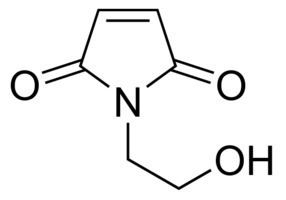Formula C4H3NO2 | Molar mass 97.07 g/mol | |
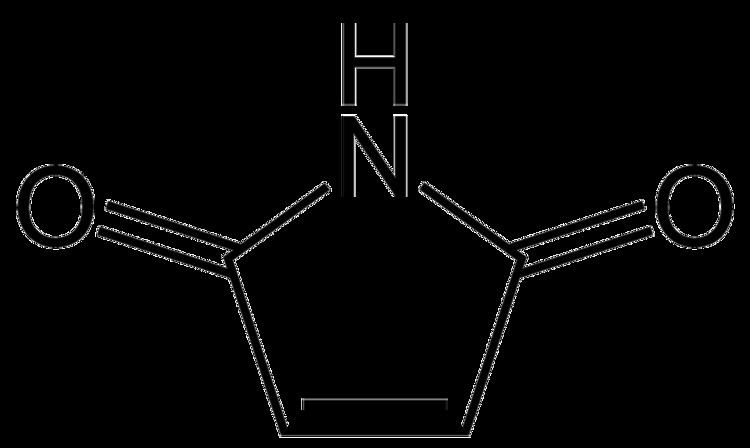 | ||
Maleimide is a chemical compound with the formula H2C2(CO)2NH (see diagram). This unsaturated imide is an important building block in organic synthesis. The name is a contraction of maleic acid and imide, the -C(O)NHC(O)- functional group. Maleimides also describes a class of derivatives of the parent maleimide where the NH group is replaced with alkyl or aryl groups such as a methyl or phenyl, respectively. The substituent can also be a polymer such as polyethylene glycol. Human hemoglobin chemically modified with maleimide-polyethylene glycol is a blood substitute called MP4.
Contents

Organic chemistry
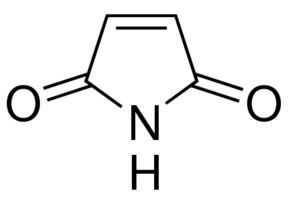
Maleimide and its derivatives are prepared from maleic anhydride by treatment with amines followed by dehydration. A special feature of the reactivity of maleimides is their susceptibility to additions across the double bond either by Michael additions or via Diels-Alder reactions. Bismaleimides are a class of compounds with two maleimide groups connected by the nitrogen atoms via a linker, and are used as crosslinking reagents in polymer chemistry.
Natural maleimides
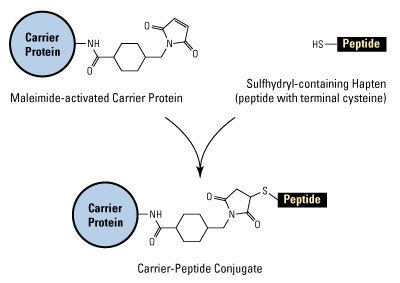
Only a handful of natural maleimides — exemplified by the cytotoxic showdomycin from Streptomyces showdoensis, and pencolide from Pe. multicolor — have been reported. Farinomalein was first isolated in 2009 from the entomopathogenic fungus Isaria farinosa (Paecilomyces farinosus) - source H599 (Japan).
Biotechnology applications
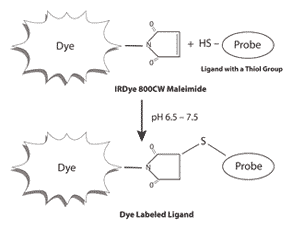
Maleimides linked to polyethylene glycol chains are often used as flexible linking molecules to attach proteins to surfaces. The double bond readily reacts with the thiol group found on cysteine to form a stable carbon-sulfur bond. Attaching the other end of the polyethylene chain to a bead or solid support allows for easy separation of protein from other molecules in solution, provided these molecules do not also possess thiol groups.
Technological applications

Mono- and bismaleimide-based polymers are used for high temperature applications up to 250 °C. Maleimides linked to rubber chains are often used as flexible linking molecules to reinforce the rubber (tire). The double bond readily reacts with all hydroxy, amine or thiol groups found on the matrix to form a stable carbon-oxygen, carbon-nitrogen, or carbon-sulfur bond, respectively. Lockheed Martin's F-35B (a VSTOL version of this US fighter) is reportedly composed of bismaleimide materials, in addition to the use of advanced carbon fiber thermoset polymer matrix composites.
